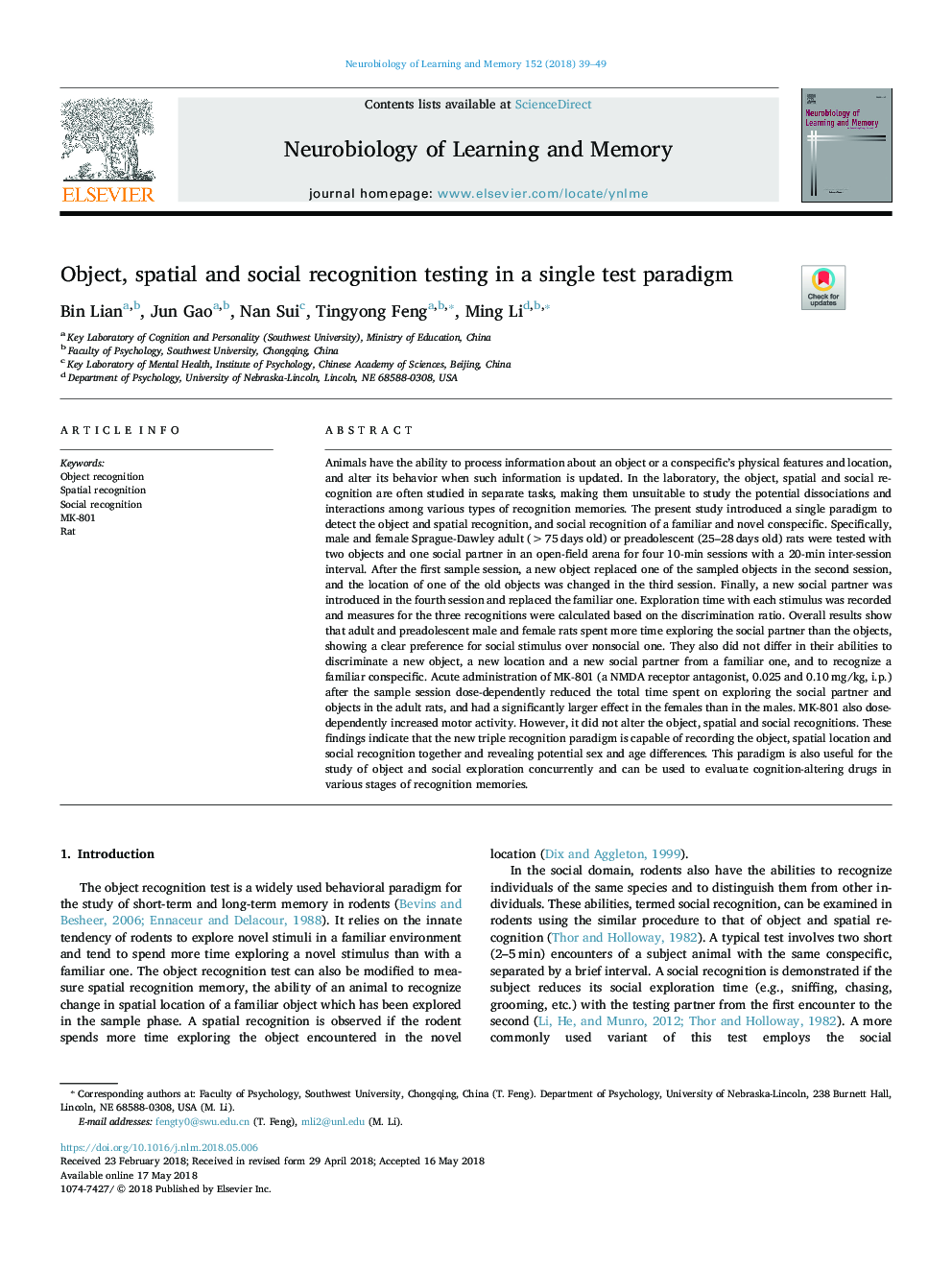| Article ID | Journal | Published Year | Pages | File Type |
|---|---|---|---|---|
| 7298769 | Neurobiology of Learning and Memory | 2018 | 11 Pages |
Abstract
Animals have the ability to process information about an object or a conspecific's physical features and location, and alter its behavior when such information is updated. In the laboratory, the object, spatial and social recognition are often studied in separate tasks, making them unsuitable to study the potential dissociations and interactions among various types of recognition memories. The present study introduced a single paradigm to detect the object and spatial recognition, and social recognition of a familiar and novel conspecific. Specifically, male and female Sprague-Dawley adult (>75â¯days old) or preadolescent (25-28â¯days old) rats were tested with two objects and one social partner in an open-field arena for four 10-min sessions with a 20-min inter-session interval. After the first sample session, a new object replaced one of the sampled objects in the second session, and the location of one of the old objects was changed in the third session. Finally, a new social partner was introduced in the fourth session and replaced the familiar one. Exploration time with each stimulus was recorded and measures for the three recognitions were calculated based on the discrimination ratio. Overall results show that adult and preadolescent male and female rats spent more time exploring the social partner than the objects, showing a clear preference for social stimulus over nonsocial one. They also did not differ in their abilities to discriminate a new object, a new location and a new social partner from a familiar one, and to recognize a familiar conspecific. Acute administration of MK-801 (a NMDA receptor antagonist, 0.025 and 0.10â¯mg/kg, i.p.) after the sample session dose-dependently reduced the total time spent on exploring the social partner and objects in the adult rats, and had a significantly larger effect in the females than in the males. MK-801 also dose-dependently increased motor activity. However, it did not alter the object, spatial and social recognitions. These findings indicate that the new triple recognition paradigm is capable of recording the object, spatial location and social recognition together and revealing potential sex and age differences. This paradigm is also useful for the study of object and social exploration concurrently and can be used to evaluate cognition-altering drugs in various stages of recognition memories.
Related Topics
Life Sciences
Neuroscience
Behavioral Neuroscience
Authors
Bin Lian, Jun Gao, Nan Sui, Tingyong Feng, Ming Li,
